“It’s not a meal in Morocco unless you have bread”
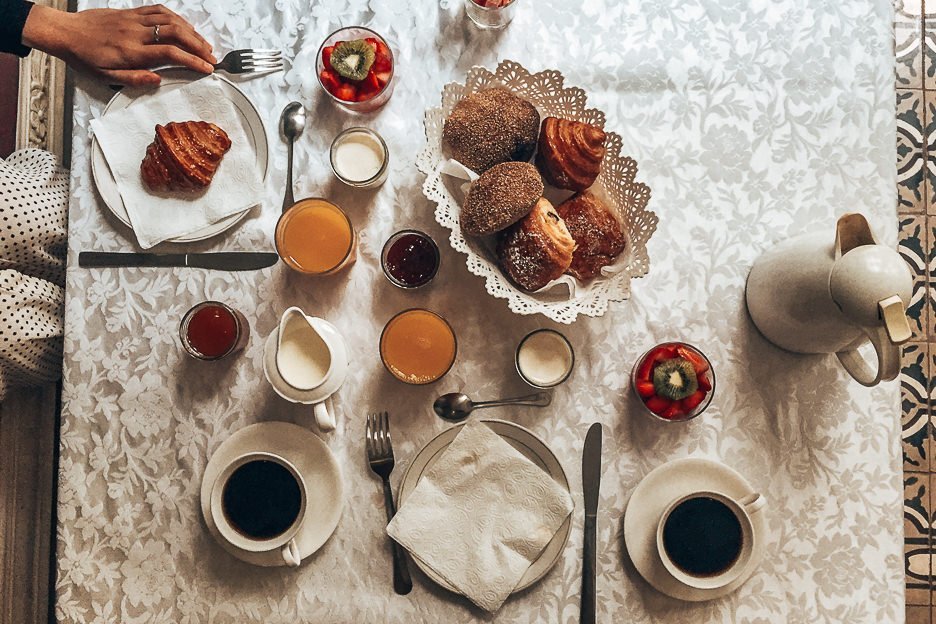
WHAT YOU MUST EAT IN MOROCCO
1. Harira Soup
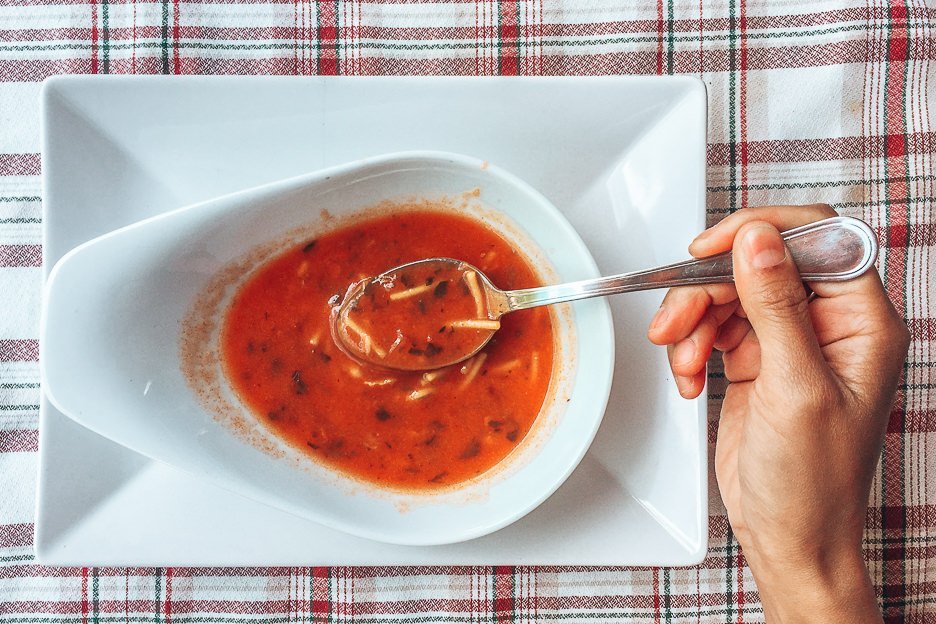
2. Omelette
If you’re looking for an alternative to tagine at meal time, then you’ll generally find omelettes on the menu. Moroccan omelette combines eggs, onion, tomatoes and occasionally olives. This protein packed option will be a welcome relief to your taste buds after a few days of non-stop tagines.
3. Tagine
A Moroccan staple, tagines will arrive at your table with a mouth-watering sizzle. You’ll have some form of meat or fish with vegetables but vegetarian tagines are widely available too. A few common ingredients in most tagines include olives, potatoes and carrots. Our favourite was slow cooked chicken in preserved lemon with green olives.
TIP: Earthenware tagines are resplendent in the souks and are available for sale in various sizes and colours.
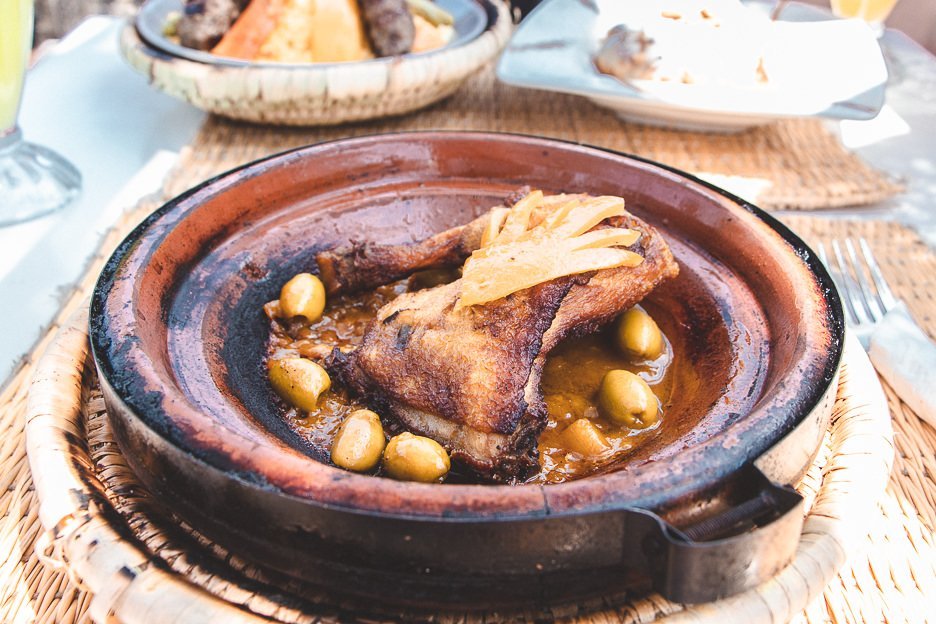
4. Orange Juice
A beverage that you’d expect to find with a continental breakfast, freshly squeezed orange juice can be found practically everywhere in Morocco. The country is one of the lead exporters in clementines, particularly the fine and nour varieties, and the Nardorcott mandarin. Usually served with breakfast everyday, a glass of freshly squeezed OJ is the perfect start to your day.
Orange slices dusted with cinnamon is also a common dessert that you’ll find on the menu in restaurants.
5. Couscous
Before arriving in Morocco, we were quite naive in thinking that preparing couscous was as simple as pouring some hot water in a bowl and covering it with a lid. Well, turns out this is the “lazy” way.
We learned that in Morocco, traditional couscous is prepared over a course of a few hours. Whilst chicken and vegetables slowly cook, another tray is added on top with the couscous. Little amounts of water and olive oil are added during the cooking process and massaged gently into the couscous. The result is a light and fluffier grain and served with meat and vegetables. Couscous has much respect in Morocco and is usually consumed on Fridays. In fact, you might only find couscous on the menu on Fridays so be quick, because it sells out fast.
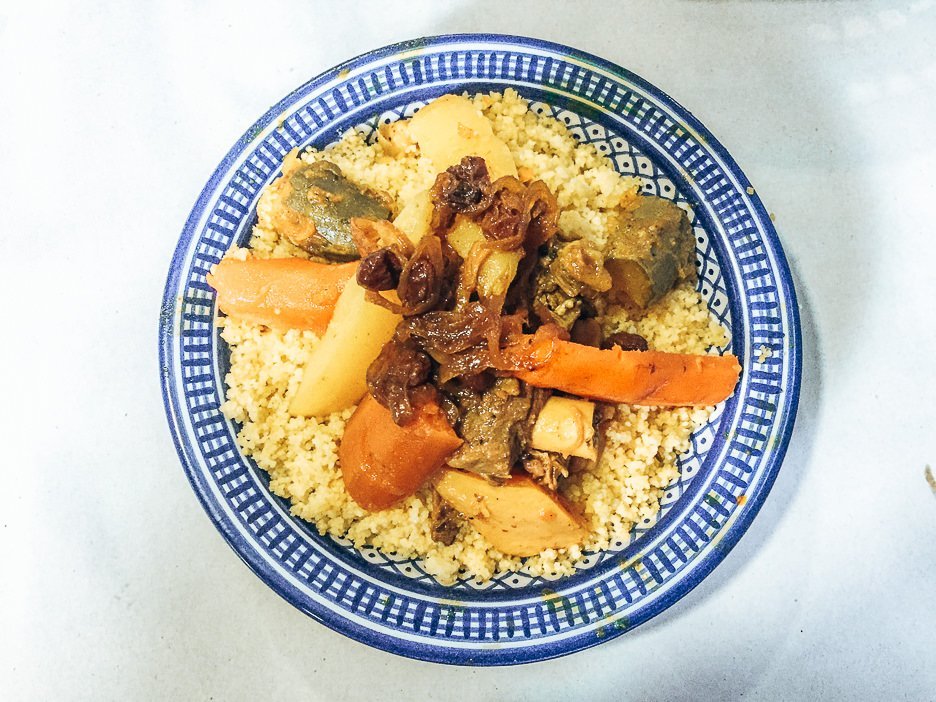
6. Barbeque
To our vegetarian friends, we would recommend skipping this one. We happened to stop at a restaurant during our tour of Southern Morocco which happened to be a butcher and a barbeque restaurant all-in-one. We didn’t expect to come across “barbeque” in Morocco but the grilling of meat is an interesting experience that we recommend trying on your travels.
Instead of selecting your meal from a menu, you’ll visit a butcher or fishmonger first. Select your fare and then bring it to a restaurant to be cooked. Often you can also order a side salad but it is also perfectly acceptable in most instances to bring your own bread, drinks and salad items for your meal too.
The butchers in Morocco may have different methods of treating the meat and animal parts to what you are used to back home, so be prepared to be confronted by this scene. The particular restaurant we visited with our tour group was quite open and uncovered. Bear in mind, you might not witness this at all but we thought it fair to prepare you in advance!
TIP: When choosing fish, you may need to take your produce to another person to have it cleaned and gutted before taking it to the chef.
7. Mint Tea
Drinking mint tea is an ancient tradition in Morocco signifying hospitality and friendship. You would be considered impolite if you refused an offer to drink tea with someone. Morocco is one of the largest importers of Chinese gunpowder green tea and is in fact one of the main ingredients of Moroccan tea. Combined with fresh spearmint, boiling hot water and (lots of) sugar, you’ll be drinking mint tea at all times of the day! If you prefer your tea less sweet, you’ll usually find sugar cubes on the side in restaurants and cafes. This way, you can add as much as you wish.
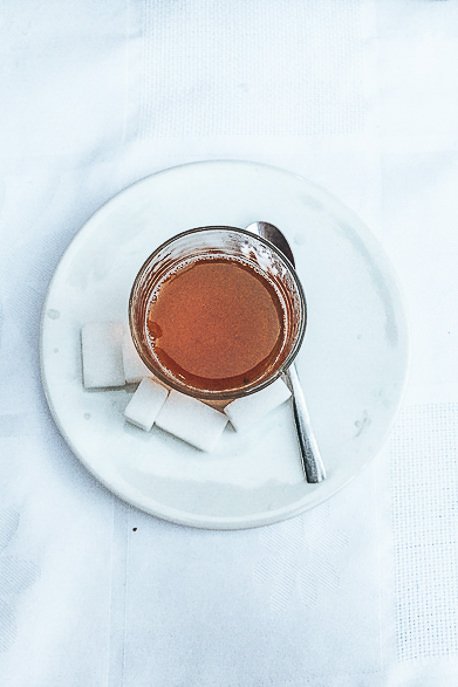
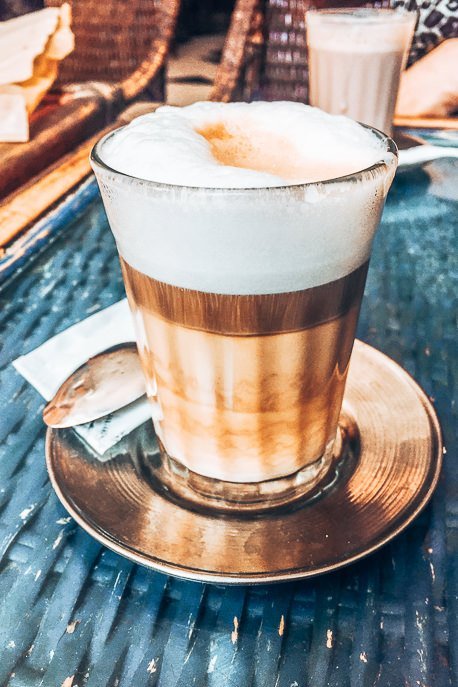
8. Nous Nous
Leave the cappuccinos, lattes and flat whites behind. A nous nous is the best way to order a milk based espresso coffee in Morocco. Half coffee, half milk and served in a small glass, Moroccans love catching up on the latest gossip around town over a nous nous.
GIVE IT A TRY: Do as the locals do and order a nous nous by nabbing your waiter’s attention and raising your thumb and index finger leaving a 8-10cm gap (i.e. like making the letter ‘C’ with your thumb and finger). This hand signal is recognised by waitstaff all over the country (so we were told!).
9. Homemade Yogurt
If you’re planning on staying in a riad in Morocco, chances are you’ll see a bowl of yogurt on your breakfast table in the morning. Hopefully your host will avoid the sweet, supermarket brands and make their own yogurt. Often laced with traces of orange blossom water, honey or another sweetener, the typical Moroccan homemade yogurt is flavoursome without being sickly sweet.
10. Pastilla
For a little touch of Spanish-influenced cuisine, make sure to try a pastilla. A traditional savoury celebration dish, you’re more likely to find pastillas in the northern cities. The filling is usually chicken or pigeon, which is shredded and cooked with a combination of spices before it is wrapped inside filo pastry and baked. A sprinkle of icing sugar and cinnamon tops of the dish (at times, also nuts so check if you are allergic!). Suffice to say, we were happy, little stuffed campers after eating these!
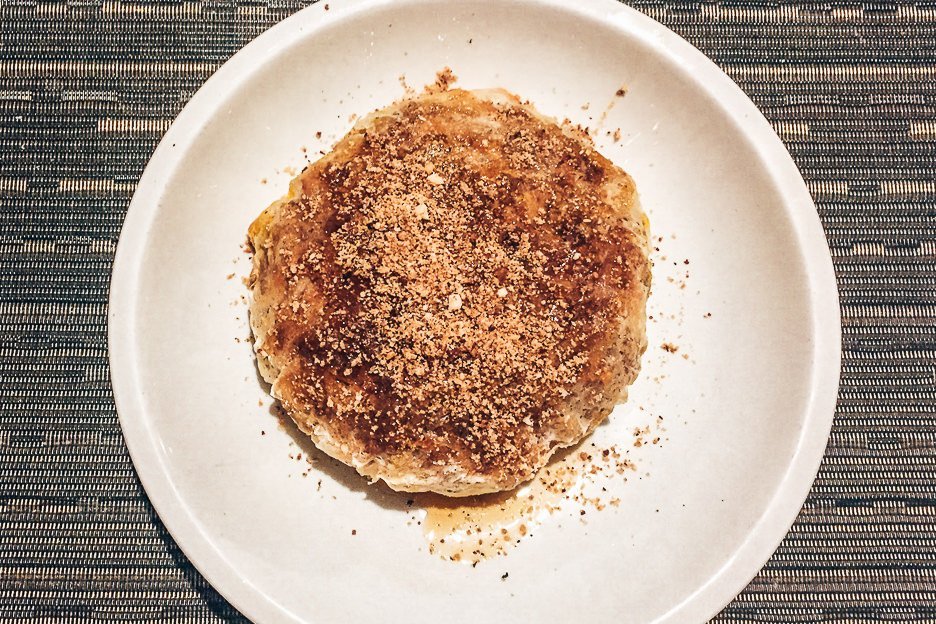
11. Dates
The arid deserts and hot climate makes Morocco an ideal location for cultivating dates. Today, the country grows over 100 different varieties with most grown in the southern regions. Go to any fruit and vegetable market and you’re likely to see stalls piled high with fresh dates. Don’t be surprised if you find bits of the stone fruit in one of your tagines.
START PLANNING YOUR TRIP TO MOROCCO
LIKE THIS POST? PIN IT AND SHARE IT!
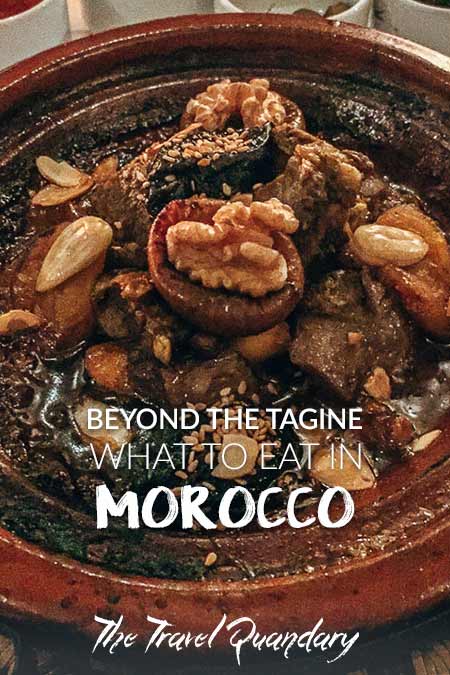
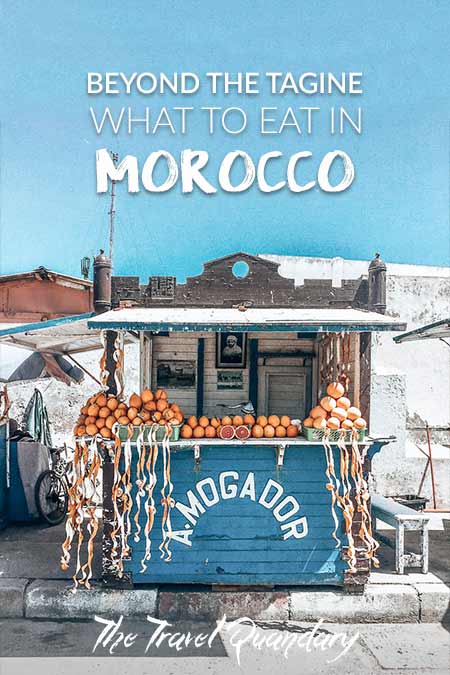

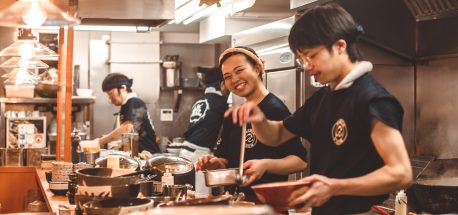




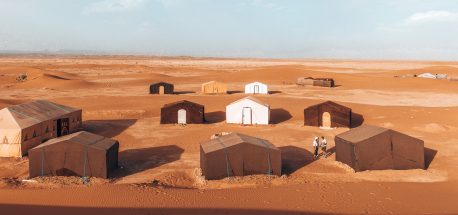


Useful information thanks
Amazing post!!
Very interesting article & amazing pictures
Thanks Amanda! We’re glad you enjoyed this blog post
Great article. Thanks for sharing with us!
Thank you jasmine for sharing, really like and i love moroccan food.
Hello this is Leo Harry. Whats your favorite food, drink, and fast food restaurant?
Very interesting article & amazing pictures, Thank you for sharing your experience with us
Thanks Jack – much appreciated!